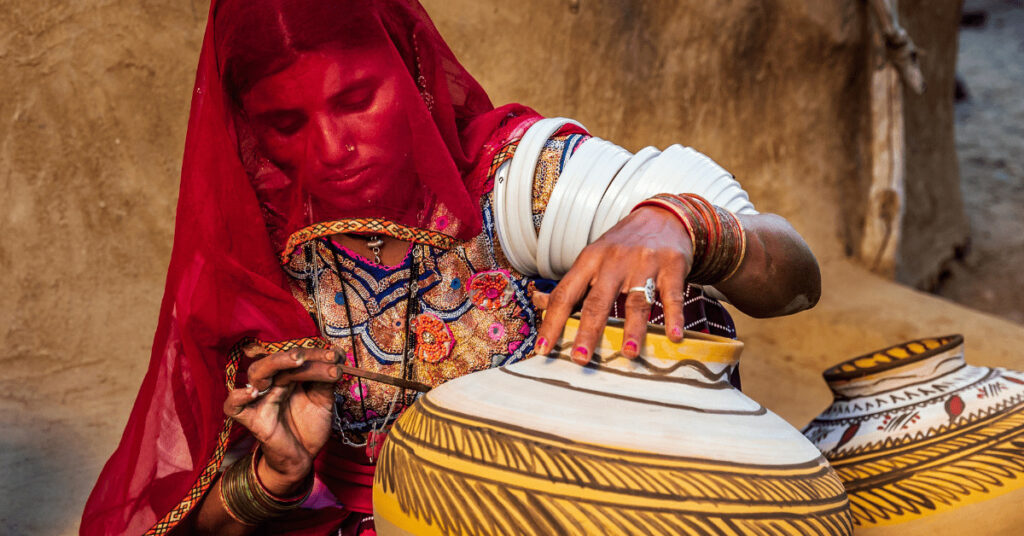Co-author: Rishabh Tomar
4 minutes read
The Rockefeller Foundation established its Smart Power India (SPI) project in 2015 to help India’s marginalised communities access reliable power through decentralised renewable-energy mini-grids. Deepali Khanna, vice president for Rockefeller’s Asia office, said that the initiative came to an important realisation as it grew. For some villages, the poles and wiring SPI initially installed served only relatively well-off villagers – leaving Dalit community members living in segregated quarters on the village outskirts without access to power.
Those community members were thus further marginalised, and an opportunity was lost. SPI’s learning orientation put it in a position to course-correct and ensure its programmes centred equity for Dalit families. The shift in focus brought the project closer to its aim of ending energy poverty and catalysing economic development. As of early October 2023, SPI had connected 494 villages in India across the states of Uttar Pradesh, Bihar, and Jharkhand.
The takeaway from this initiative is that equity has to be a guiding principle to improve the economic and social well-being of Dalit, Bahujan, and Adivasi (DBA) communities. Without an explicit focus on equity in grantmaking, programme design, and implementation, NGOs and funders risk not addressing the needs of the most marginalised and ultimately causing more harm than good.
NGOs and funders can flip that script by taking the unique histories, aspirations, and needs of Dalit and Adivasi communities into account, co-creating solutions with these communities while giving them training and support to step into their own power. An equity-centred approach also acknowledges that the lived experiences and specific needs of Dalit and Adivasi communities differ by state and within states.
The upside of this approach is that recognising and supporting the capacity of individuals, groups, and organisations helps them to identify their own solutions. This view logically leads to working with NGOs whose leaders are closest to the problems funders seek to address. Initiatives led by people from the communities they serve are more likely to be successful and sustainable.
For instance, Shiksharth Trust, an education NGO based in the Sukma district in Chhattisgarh, stresses for community members to play an active role in designing and implementing programmes. Shiksharth works on ways in which Sukma’s community, along with its wisdom, culture, and customs, can inform classroom methodology and pedagogy. Its aim is to improve the quality of education for rural and tribal children living in one of the most impoverished and violent regions of India. The organisation develops contextually relevant personalised learning opportunities for children while building on the culture and skills of tribal communities and their students.
Yet NGOs like Shiksharth often find themselves with sizable funding gaps relative to their peers. Amongst 60 NGOs self-identifying as DBA-led in recent Bridgespan research, 70% reported no budget surpluses over the previous three years, compared to 45% for non-DBA-led NGOs. In addition, more DBA-led NGOs reported fewer than three months of reserves than those with non-DBA-led leaders. Meanwhile, NGOs based in rural areas face similar challenges. Such shortfalls have a chilling effect on these NGOs’ abilities to withstand a downturn and grow over the long term.
Pivot and redesign
As highlighted in a 2022 Bridgespan report, funders can bring a more intentional equity focus to their work with marginalised communities through three broad approaches:
- Strengthen agency and develop community leaders. Communities should have the power and the people to shape their own futures. By lifting up emerging leaders and ensuring communities have agency, funders can catalyse equitable change. For example, CORO, which is predominantly Dalit- and Muslim-led, builds leadership from within marginalised communities through a fellowship programme, Quest to strengthen individual identity and supports participants to act as agents of change.
- Support quality education and appropriate occupational training. Meeting aspirations for education and occupational achievement are central to social mobility. Thus, many programmes focus on academic participation, and job training and hiring processes. For example, India’s Aga Khan Rural Support Programme provides a variety of skill-development in areas such as retail, computer hardware, beauty, wellness, as well as entrepreneurship training and support for businesses such as poultry farming, rural crafts, and ecotourism. The idea is to meet the needs and aspirations of DBA community members whether they wish to stay local or migrate to cities. The Sangwari (Tribal Women) Programme is another example. The programme trains women from Bastar’s tribal communities to be frontline health workers in their villages.
- Promote equity in grantmaking and programme design. Communities can identify specific problems and propose and implement their own solutions. For example, community-based Ekjut, which operates in Jharkhand and Orissa, works with Adivasi and other marginalised communities on issues related to maternal and newborn health and nutrition. Its process of community engagement, called Participatory Learning and Action, is conducted via structured monthly women’s group meetings led by a local female facilitator that works to co-create improved health and nutritional outcomes for mothers, newborns, and young children.
Successful programmes like those described above circumvent the broken ladder of mobility by mobilising communities to identify and prioritise challenges, democratically find and implement solutions, and then evaluate their progress. Dalit and Adivasi communities – who make up a quarter of India’s population – have much to offer when they gain access to flexible, adaptable, and transparent approaches to funding. They can build stronger and taller ladders for more Dalit and Adivasi communities to climb.


















